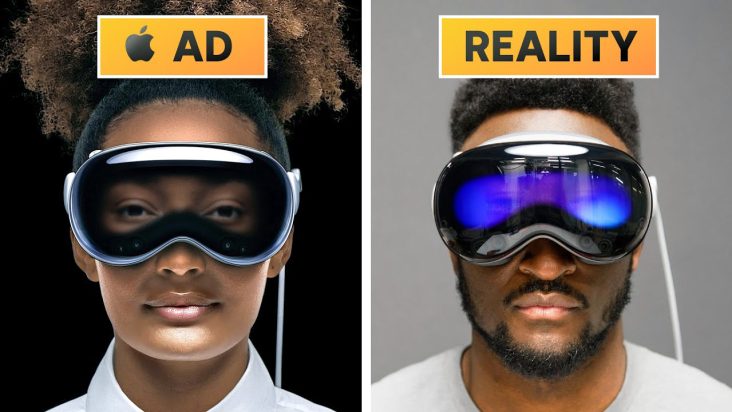The much-anticipated Apple Vision Pro has finally arrived, promising to revolutionize the world of spatial computing and augmented reality. But does it live up to the hype?
The Hype Surrounding Apple Vision Pro
With a price tag starting at $3,499, the Apple Vision Pro aims to redefine how we interact with computers. Apple’s ambitious marketing campaigns tout the device as the beginning of “spatial computing,” promising to integrate apps seamlessly into our surroundings.
The Hardware of Apple Vision Pro
While Apple distances the Vision Pro from traditional VR headsets, it essentially operates as one, albeit with some unique features. The device boasts a sleek design, constructed from premium materials like magnesium and carbon fiber.
Defining “Reality” in Computing
Navigating the terminology of virtual reality (VR), augmented reality (AR), and mixed reality can be complex. Understanding these distinctions is crucial to appreciating the capabilities of the Vision Pro.
Setting Up the Apple Vision Pro
Apple prioritizes user experience with a streamlined setup process, reminiscent of configuring other iOS devices. However, the weight and bulkiness of the headset pose practical challenges.
Display Technology in Apple Vision Pro
The Vision Pro’s MicroOLED displays deliver exceptional clarity and color accuracy, but their implementation comes with trade-offs. Apple’s choice to prioritize video passthrough over optical AR reflects current technological limitations.
The Tradeoffs of Augmented Reality
While the Vision Pro excels in certain aspects, it falls short of the seamless AR experience envisioned by Apple. The compromise between VR and AR functionality underscores the device’s inherent limitations.
Apple’s Pursuit of Optical AR
Apple’s long-term vision for AR remains focused on optical solutions that integrate seamlessly into everyday life. However, achieving this goal requires overcoming significant technological hurdles.
Conclusion
The Apple Vision Pro represents a significant step forward in spatial computing, but its success hinges on addressing key challenges. As technology evolves, Apple remains committed to pushing the boundaries of augmented reality.
FAQs
1. Is the Apple Vision Pro worth the investment?
- While the Vision Pro offers impressive capabilities, its high price and practical limitations may deter some users. Ultimately, its value depends on individual needs and preferences.
2. How does the Vision Pro compare to other VR headsets?
- The Vision Pro distinguishes itself with premium design and innovative features, but competing VR headsets may offer better value for certain users.
3. Can the Vision Pro replace traditional computers?
- While Apple envisions the Vision Pro as a versatile computing device, its current limitations make it unlikely to replace traditional computers entirely.
4. What are the main drawbacks of the Vision Pro?
- Users may encounter issues with comfort, weight, and practicality, particularly during extended use. Additionally, the device’s reliance on video passthrough limits its potential for true augmented reality experiences.
5. What developments can we expect in future iterations of the Vision Pro?
- Apple continues to refine its AR technology, and future iterations of the Vision Pro may address current limitations while introducing new features and enhancements.


